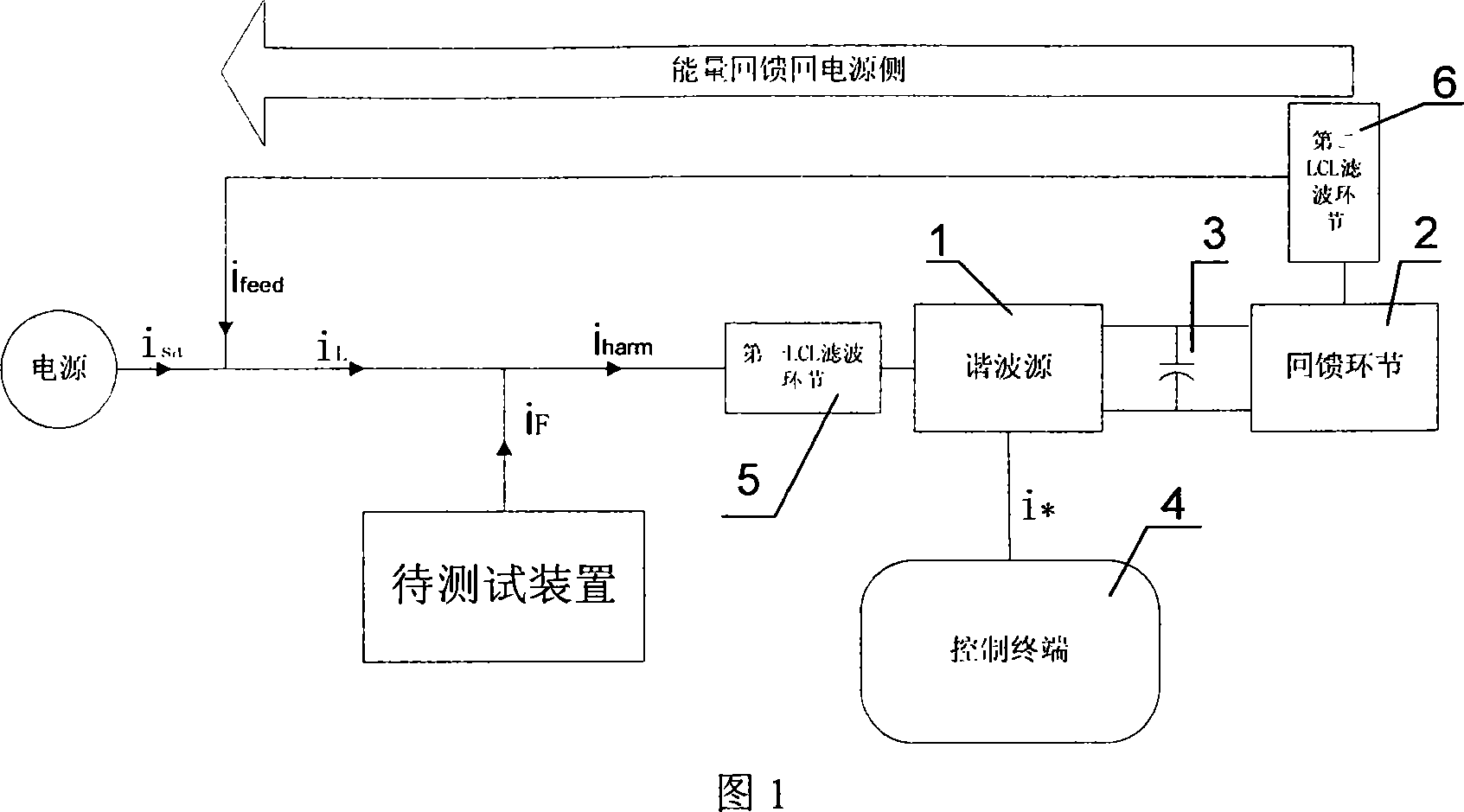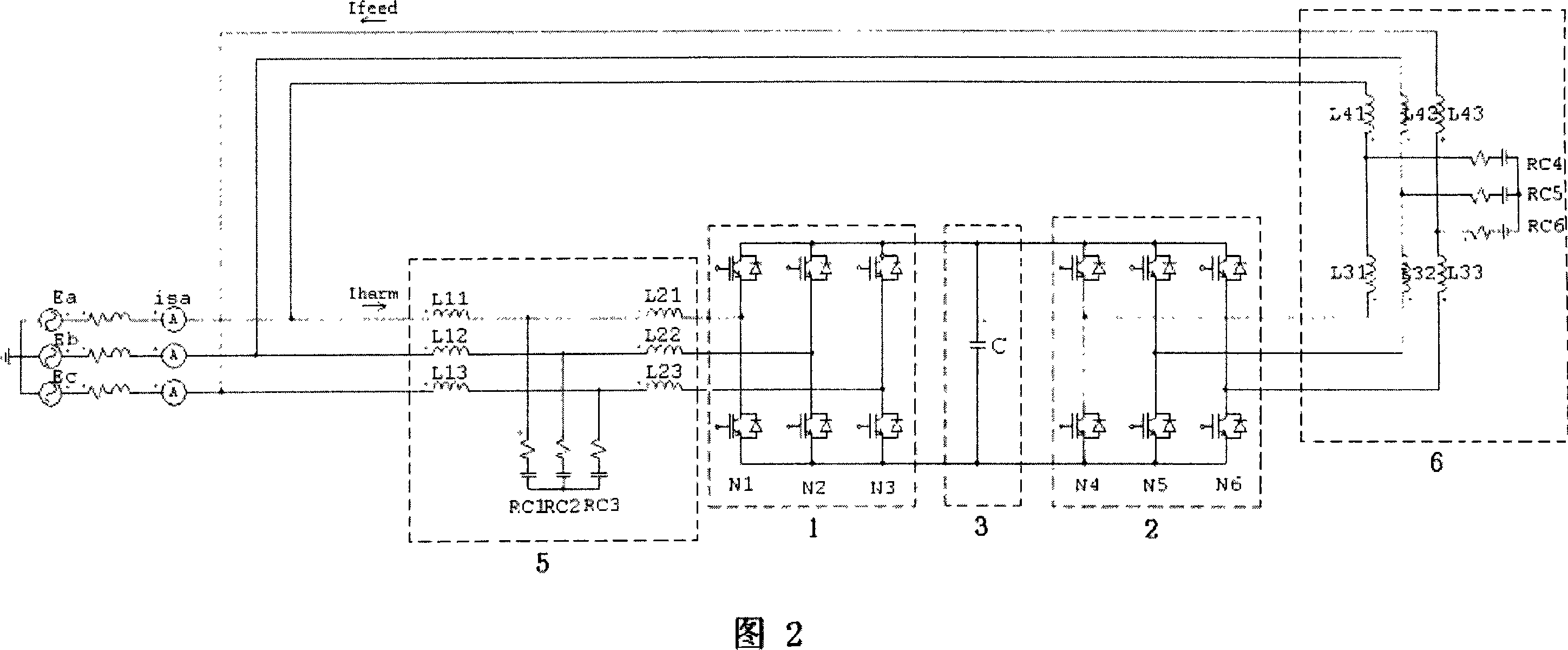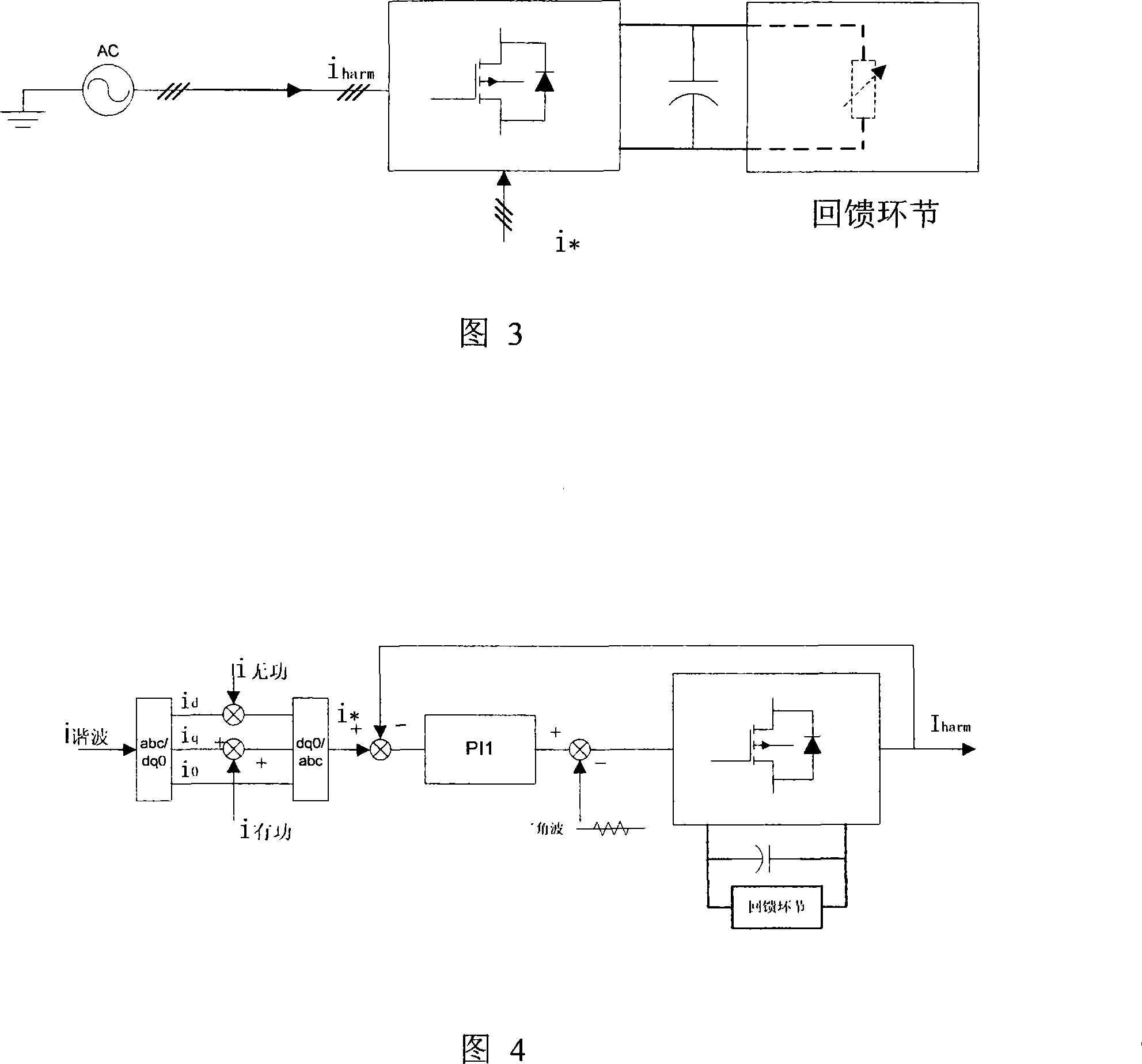Energy feeding type electrical energy mass perturbance generating device
A power quality disturbance generation device technology, applied in the direction of measuring devices, measuring electrical variables, output power conversion devices, etc., can solve the problems of high cost, long test cycle, and difficulty in unifying test environment standards, so as to save electric energy and reduce required effect
- Summary
- Abstract
- Description
- Claims
- Application Information
AI Technical Summary
Problems solved by technology
Method used
Image
Examples
Embodiment Construction
[0018] Accompanying drawing is embodiment of the present invention, content of the present invention will be further described below in conjunction with accompanying drawing:
[0019] The device includes a harmonic source 1, a feedback link 2, an intermediate DC capacitor 3, a control terminal 4, a first LCL filter link 5, and a second LCL filter link 6; the control terminal 4 is realized by a DSP controller, and according to user settings The control signal is generated regularly to control the current disturbance of the harmonic source part; the harmonic source 1 and the feedback link 2 are cascaded in 3 phases through the intermediate DC capacitor to form an AC-DC-AC topology to achieve energy feedback; the AC of the harmonic source 1 The AC side of the feedback link 2 is connected to the grid through the first LCL filter link 5 , and the AC side of the feedback link 2 is connected to the grid through the second LCL filter link 6 .
[0020] 1. Harmonic source
[0021] As s...
PUM
 Login to View More
Login to View More Abstract
Description
Claims
Application Information
 Login to View More
Login to View More - R&D
- Intellectual Property
- Life Sciences
- Materials
- Tech Scout
- Unparalleled Data Quality
- Higher Quality Content
- 60% Fewer Hallucinations
Browse by: Latest US Patents, China's latest patents, Technical Efficacy Thesaurus, Application Domain, Technology Topic, Popular Technical Reports.
© 2025 PatSnap. All rights reserved.Legal|Privacy policy|Modern Slavery Act Transparency Statement|Sitemap|About US| Contact US: help@patsnap.com



